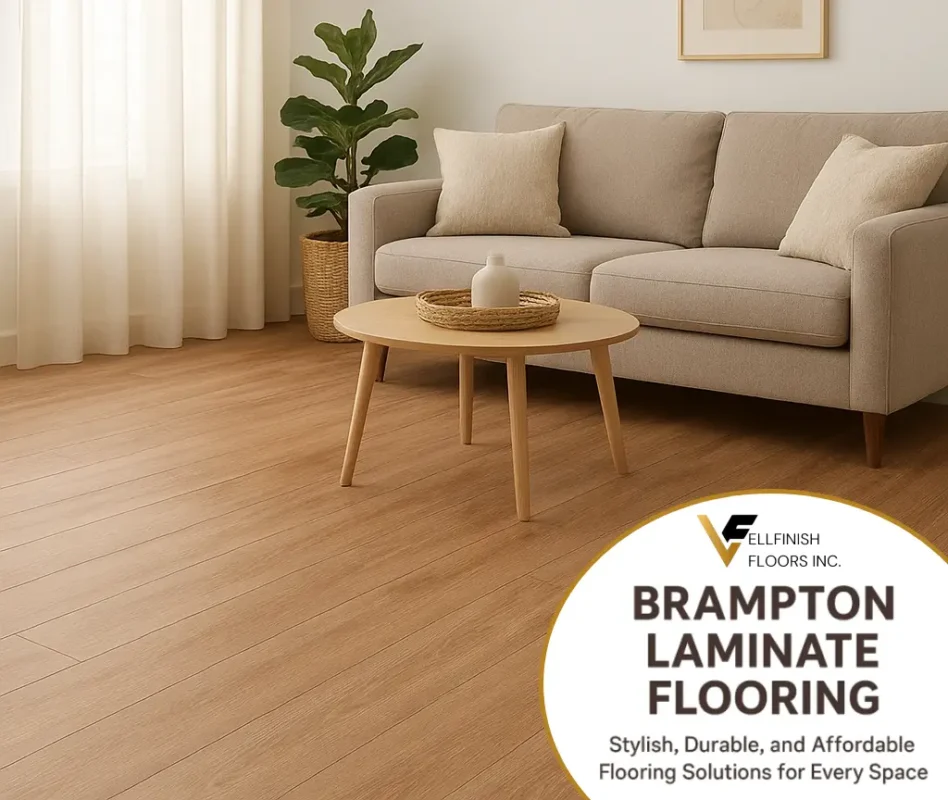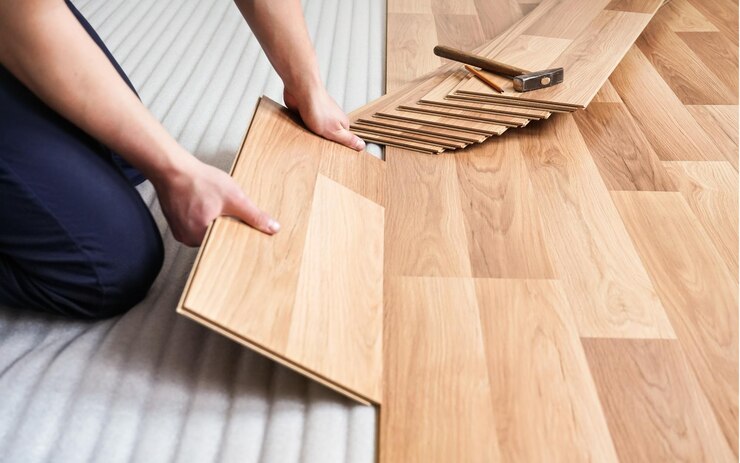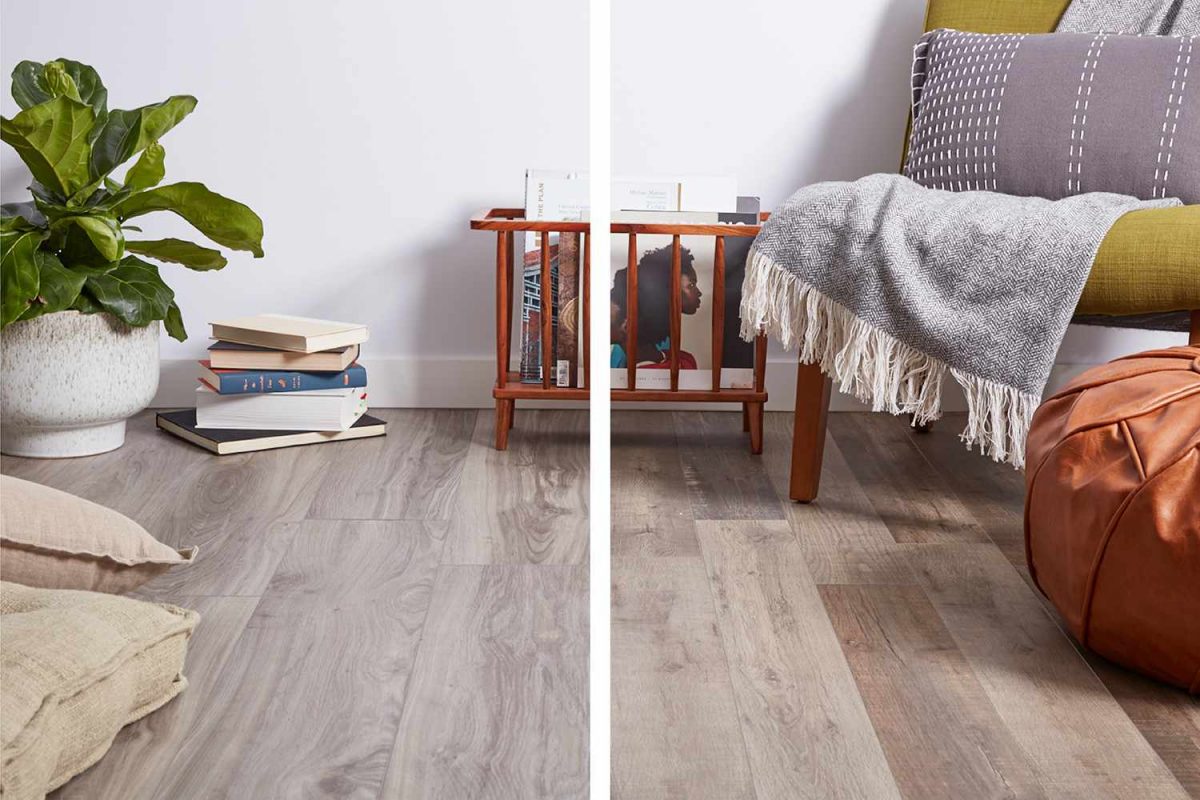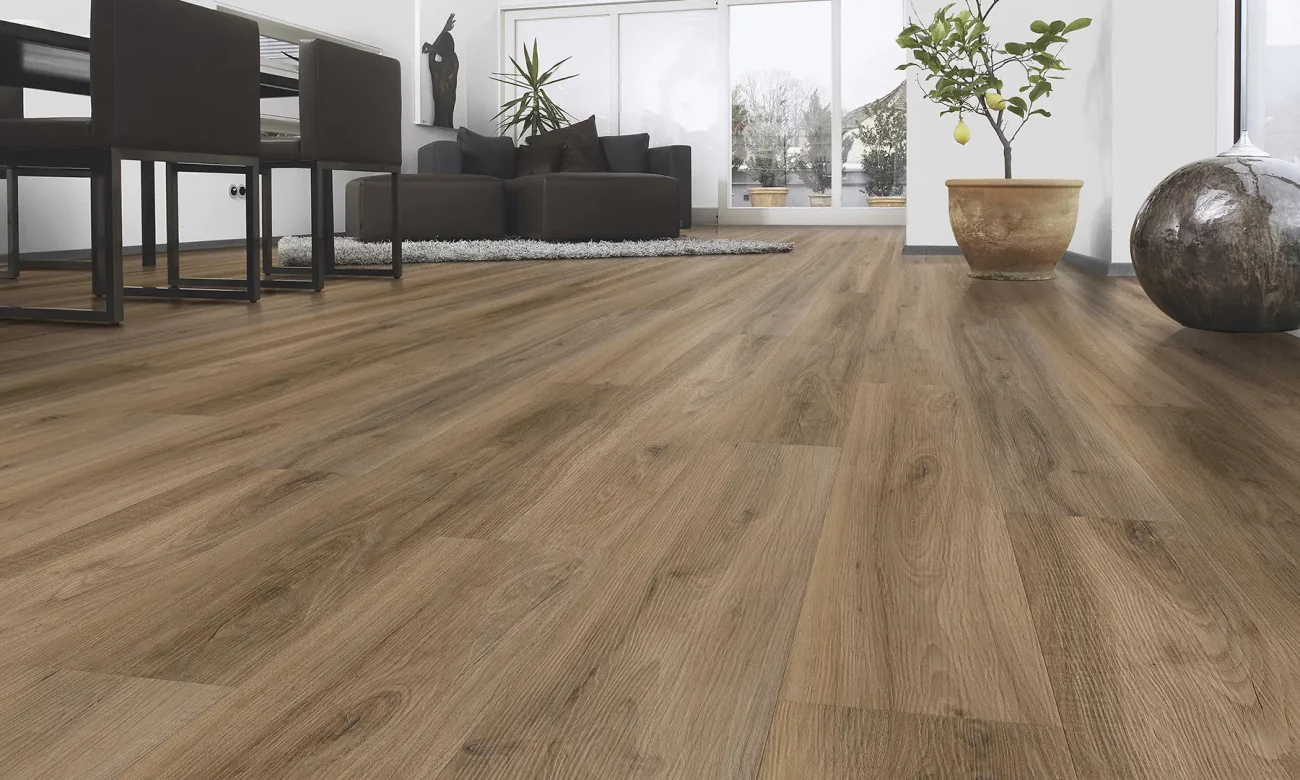Vinyl vs. Laminate Flooring: What’s the Difference?

Two of the most common options for homeowners when it comes to replacing their floors are vinyl and laminate. Both are famous for being durable, budget-friendly, and easy to use, but they are not identical. Although they might resemble each other at first sight, vinyl and laminate flooring are different in what they are made of, how they perform, installation procedures, and long-term advantages.
If you’re having trouble choosing between the two, knowing these distinctions can guide you to make the best decision for your home. In this comprehensive guide, we’re going to break down all that you need to know about vinyl versus laminate flooring so that you can make the choice with confidence that is most suitable for your lifestyle and budget.
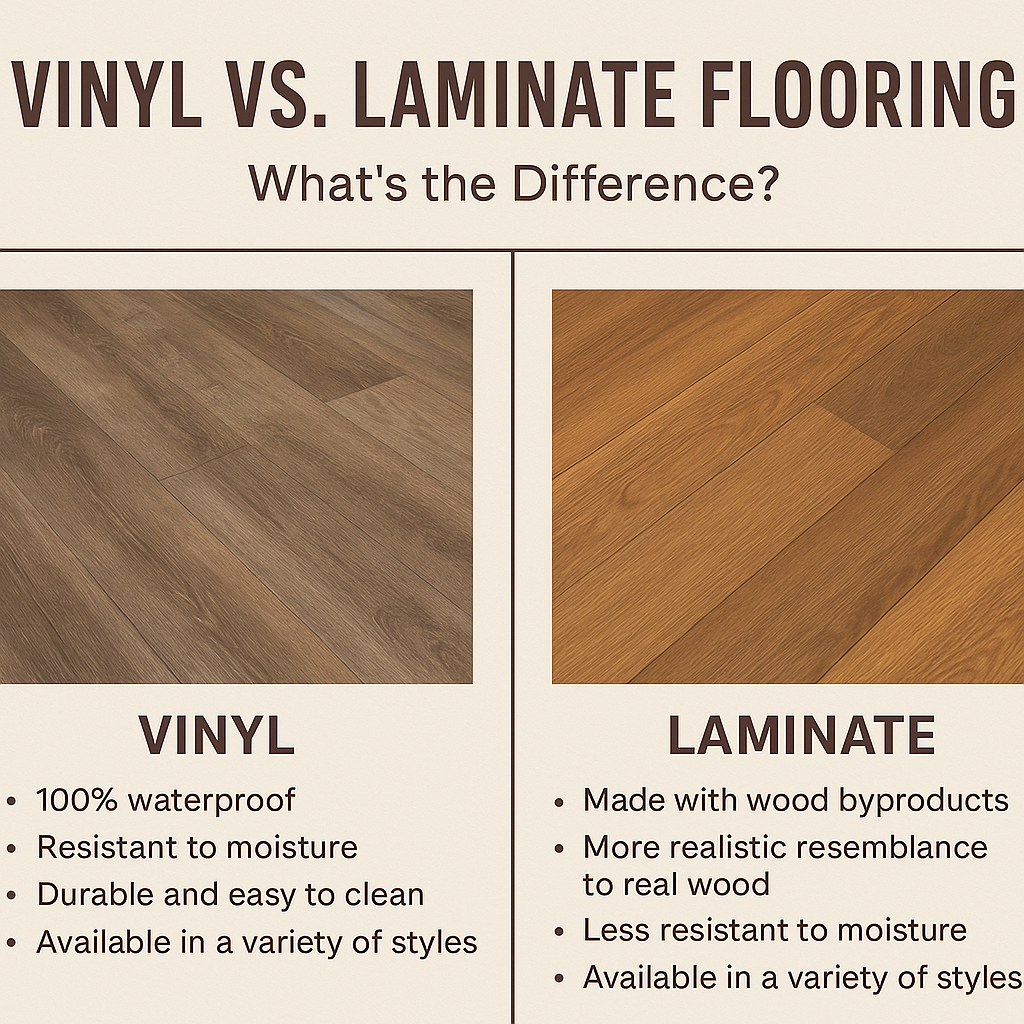
A Brief Overview of Vinyl and Laminate Flooring
Before going in-depth, let’s first get an overview of what each of these floorings is:
Vinyl Flooring
Vinyl is a manufactured flooring product produced mostly from PVC (polyvinyl chloride). Vinyl is available in various forms, such as luxury vinyl planks (LVP), luxury vinyl tiles (LVT), and sheet vinyl. The vinyl floor of today is light years from yesterday’s weak roll-out stuff—it’s fashionable, extremely strong, and wholly waterproof.
Laminate Flooring
Laminate is a composite floor covering constructed using a core of high-density fiberboard (HDF) with a photographic image topcoat that mimics wood, stone, or tile. It has a robust wear layer on top to guard it against dents and scratches. Laminate is not completely waterproof but has a highly realistic wood-like appearance with an affordable price tag.
Key Differences Between Vinyl and Laminate Flooring
1. Material Composition
- Vinyl: 100% man-made. Its plastic build makes it waterproof and extremely resistant to water.
- Laminate: Composed of wood waste products (HDF) and resin. Durable though laminate is, its wood core makes it more susceptible to water damage.
- Verdict: If you require waterproof floors, vinyl is the winner.
2. Appearance and Realism
- Vinyl: Provides an extensive range of designs, but some of the more affordable vinyl might not look as realistic. High-end luxury vinyl planks can be extremely realistic with embossed patterns.
- Laminate: Famous for its realistic appearance and textures. With high-resolution printing and embossing, laminate tends to create a closer approximation of natural hardwood than vinyl.
- Verdict: For homeowners who want the most realistic wood appearance, laminate tends to have the edge.
3. Durability and Resistance
- Vinyl: Waterproof, scratch, and stain-resistant. With a tough wear layer, vinyl can handle heavy foot traffic, pets, and spills.
- Laminate: Scratch and dent-resistant, but it doesn’t do well with water. Too much exposure to water can swell or warp it.
- Verdict: Both are resilient but vinyl wins because it’s waterproof.
4. Comfort and Feel Underfoot
- Vinyl: Warmer and softer than non-padded tile, particularly when floated on padded underlayment. Thinner vinyl is somewhat hard to the touch.
- Laminate: More rigid and thicker, and closer to a real wood feel. Laminate tends to be more comfortable to walk on and quieter as far as non-impact sounds go.
- Verdict: Laminate feels most like hardwood, but cushioned vinyl can feel comfortable too.
5. Water and Moisture Resistance
- Vinyl: 100% water-resistant, perfect for kitchens, bathrooms, and basements.
- Laminate: Water-resistant, at best. Even “waterproof” laminate products have limitations, as water can penetrate into the seams and harm the core.
- Verdict: Vinyl wins hands down with ease of installation for water resistance.
6. Ease of Installation
- Vinyl: Comes in click-lock planks, peel-and-stick tiles, or sheets. Most vinyl planks can be installed DIY, and they can even be floated over existing floors.
- Laminate: Generally employs a click-and-lock floating floor system. It needs a level, smooth subfloor but is also DIY-friendly for beginners.
- Verdict: Both are a cinch to install, but vinyl is a bit more flexible because it is waterproof.
7. Maintenance and Cleaning
- Vinyl: Low maintenance. Just sweep, vacuum, or mop with water and mild cleaner.
- Laminate: Dry cleaning is simple with vacuum or broom, but do not mop with too much water. Special cleaners are advisable.
- Verdict: Vinyl is simpler to keep clean, particularly in homes where spills occur.
8. Lifespan and Longevity
- Vinyl: Provided with the right care, luxury vinyl lasts for 10–20 years. Thicker planks with a heavy-duty wear layer have a longer lifespan.
- Laminate: Typically lasts 10–15 years, depending on quality. Luxury laminates can be as durable as vinyl but more susceptible to water problems.
- Verdict: Vinyl can last longer, particularly in moist environments.
9. Eco-Friendliness
- Vinyl: Composed of man-made materials, and not always recyclable. A few manufacturers now provide green alternatives, but sustainability remains an issue.
- Laminate: Made of wood residue and tends to be greener. Most laminates are recyclable and low-VOC compliant.
- Verdict: Laminate is more environmentally friendly overall.
10. Cost
- Vinyl: The cost varies from affordable sheet vinyl up to more expensive luxury vinyl planks. Average $2–$7 per square foot.
- Laminate: Generally costs $1–$5 per square foot, so a bit less expensive than vinyl.
- Verdict: Laminate tends to be more economical upfront.
Best Rooms for Vinyl Flooring
Vinyl performs best in areas that may have spills, moisture, or heavy traffic, including:
- Bathrooms
- Kitchens
- Laundry rooms
- Basements
- Entryways
Best Rooms for Laminate Flooring
Laminate is perfect for areas where water isn’t as much of an issue and aesthetics is most important:
- Living rooms
- Bedrooms
- Dining rooms
- Hallways
Advantages and Disadvantages of Vinyl Flooring
Advantages:
- 100% waterproof
- Easy to maintain and low-maintenance
- Scratch-resistant and durable
- DIY-friendly installation
Long-lasting
Disadvantages:
- Feels less natural underfoot
- Lower-quality vinyl can appear unnatural
- Not the most environmentally friendly option
- Advantages and Disadvantages of Laminate Flooring
Advantages:
- Extremely realistic wood-like look
- Warm and comfortable underfoot
- Inexpensive compared to hardwood
- Scratch and dent resistant
- Simple DIY installation
Disadvantages:
- Not waterproof
- Can warp or swell when it comes into contact with moisture
- Shorter durability in humid environments
Which One Should You Choose?
Choose Vinyl If…
You prefer waterproof, low-maintenance flooring that can withstand spills, pets, and heavy foot traffic. It’s the best option for moisture-rich rooms such as kitchens and bathrooms.
Choose Laminate If…
You want a more realistic wood appearance and need a cost-effective option for dry rooms like living rooms and bedrooms.
Final Thoughts
Both vinyl and laminate flooring have their strengths, and the best choice depends on your needs and lifestyle. If water resistance and longevity are top priorities, vinyl is the clear winner. On the other hand, if you’re after a realistic wood-like appearance at a lower cost, laminate might be your best bet.
By taking into account where the flooring will go, how much upkeep you’re willing to perform, and what kind of look you want, you can make a sound choice between these two favorite flooring types. Either one you select, vinyl and laminate provide fashionable, long-lasting, and budget-friendly options for changing your home.



